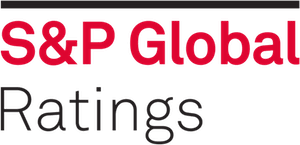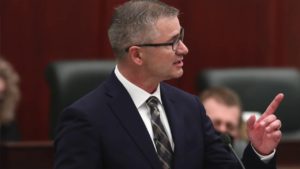Citing COVID-19 and budgetary balances which have not “yet recovered from the slump in oil prices that began in 2014, to a greater degree than we had expected,” S&P Global Ratings downgraded Alberta’s long-term credit rating to A from A+. Today Moody’s issued a release noting the completion of a periodic review of Alberta’s ratings. No change to the rating was initiated.
S&P Global Ratings
There really wasn’t anything newsworthy in yesterday’s downgrade announcement. The agency noted that Alberta’s after-capital deficits, that is Revenue less operating and capital expenses is the “largest of any local and regional government in the country this fiscal year and last” resulting in the one-notch downgrade. Of concern was a deterioration of liquidity: “free cash and investment balances will represent less than 30% of the next 12 months of debt service.” Liquidity was quantified as less than 30 per cent of free cash and investment balances of next year’s debt service. The province still retains “strong access” to Canadian and foreign debt markets.

Another comment of note, which is sadly commonplace in commentaries on Alberta’s public finances, is the lack of political will to raise taxes: “Although Alberta possesses tax advantages compared with other Canadian provinces, this flexibility has not been used yet to improve the province’s fiscal position.” Also remarked on was the absence of any plan to return to budgetary balance with the agency warning that “absence of timely responses by the government to implement new fiscal measures intended to restore fiscal sustainability, could lead us to revise the outlook to negative or lower the ratings.”
Finally S&P reiterated its previous acknowledgement of significant contingent liabilities if the province represented by guaranteed deposits of ATB Financial and the credit union system representing less than 20 per cent of fiscal 2021-22 revenues. This appears to be an error since ATB deposit liabilities at 31 December 2021 were $37.1 billion alone or 80 per cent of projected 2021-22 revenue.
According to a report in The Globe and Mail by Carrie Tait, Finance Minister Toews in a statement said the decision

was “unwelcome news” noting that the Province would still be able to borrow money. The usual messages were reiterated about Alberta’s “responsible financial management” and “commitment to economic recovery.”
This statement was seemingly belied the next day by an “historic investment to create thousands of jobs.” In this exciting news, praised by Alberta Chambers of Commerce CEO Ken Kobly, up to $370 million of Albertha taxpayers’ money was to be released to cover 25 per cent of an employees’ salary to a maximum of $25,000 per employee. Gushing quotes can from no less than the Premier and four cabinet members sprinkled this “historic” announcement. Application will open tomorrow morning and remain open until 31 August. Funds can also be accessed by not-for-profit organizations. Whether this munificence is consistent with responsible financial management is another matter. Minister Toews’ imprimatur was not found on the news release. How such a program would result in long-term fostering of jobs is another question.
Moody’s announcement
On 18 May, Moody’s issued a slew of periodic reviews of ratings for Canadian provinces, including Alberta.
The review was conducted through a portfolio review discussion held on 13 May 2021 in which Moody’s reassessed the appropriateness of the ratings in the context of the relevant principal methodology(ies), recent developments, and a comparison of the financial and operating profile to similarly rated peers. The review did not involve a rating committee
According to Moody’s release:

The rating is pressured by very large multi-year deficits – with an uncertain time projection to return to balance – as a result of the adverse fiscal and economic impacts of the coronavirus pandemic. The exposure to oil price fluctuations increases revenue uncertainty. The province’s debt burden could rise to become the highest among Canadian provinces this year, exceeding 300% of revenue. Alberta’s rating incorporates its baseline credit assessment (BCA) of a1, as well as Moody’s assessment of a high likelihood of extraordinary support from the Government of Canada (Aaa) in the event that Alberta faced acute liquidity stress. (Emphasis added)
Unlike S&P, which highlighted a growing weakness in Alberta’s liquidity, Moody’s praised the Province for its “high levels of liquidity from cash and investments.” As with S&P, Moody’s identified the lack of a return to balanced budgets as well nor did it refer to the Province’s so-called fiscal anchor of net debt of no more than 30 per cent of provincial GDP. Moody’s echoed its rival’s assessment that the liabilities of ATB Financial are synonymous with those of the Province. Troubling was Moody’s observation that “(T)he province’s debt burden could rise to become the highest among Canadian provinces this year, exceeding 300% of revenue.”
Interprovincial Comparisons
The table below indicates where Alberta stands relative to its provincial peers. Alberta now ranks at the bottom of Canada’s western provinces but generally above the provinces in Atlantic Canada. Taking Moody’s ratings as a benchmark, Alberta is tied with Ontario with lower ratings than the other two large Canadian provinces, British Columbia and Québec.
| Provincial Long-term Credit Ratings | ||||
| Province | DBRS/Morningstar | Fitch Ratings | Moody’s | S&P Global Ratings |
| Alberta | AA(Low)- Negative | AA- Negative | Aa3 -Stable | A – Stable |
| British Columbia | AA (high)- Stable | AAA | Aaa | AAA |
| Saskatchewan | AA (low) -Stable | AA-Stable | Aaa | AA |
| Manitoba | A- Stable | N/R | Aa2 | A+ |
| Ontario | AA (low)-Stable | AA- Stable | Aa3 -Stable | A+- Stable |
| Quebec | AA (low) | AA- Stable | Aa2- Stable | AA- -Stable |
| New Brunswick | A (high)- Stable | N/R | Aa2- Stable | A+ – Stable |
| Prince Edward Island | A- Stable | N/R | Aa2 | A- Stable |
| Nova Scotia | A (high)- Stable | N/R | Aa2- Stable | AA- – Stable |
| Newfoundland and Labrador | A (low)-Negative | N/R | A1 | A – Negative |
| Sources: provincial Finance department websites, Moody’s, S&P, DBRS/Morningstar | ||||
The chart following (PDF embedded) courtesy of BMO Capital Markets shows the spread above 10-year Government of Canada bonds relative to B.C. and Ontario along with changes to Alberta’s rating by DBRS/Morningstar. In 2006, with a Triple A credit, Alberta could borrow at the tightest spreads relative to the federal benchmark and relative to B.C. and Ontario. This advantage slipped beginning in 2015-16 and today Alberta spreads are typically 5-10 basis points wider than British Columbia’s. While one-tenth of one per cent may not seem like a lot, when the Alberta government’s borrowing and refinancing requirements are over $20 billion, ten basis points means twenty million dollars annually.
These ratings once again underline Alberta’s deteriorating credit profile. Each slippage means fewer bonds will be purchased by institutional investors who will reach limits to Alberta government and agency debt issues. This downgrade also comes at a time of news that Saudi Arabia has dumped 51 million shares of Canada’s largest oilsands producer.
Figure 10Related Posts
I wonder whether any of these ratings consider the potential for massive liabilities IF the Alberta government accepts responsibility for the massive and ever increasing environmental liabilities associated with oil, gas and mining operations in the Province.